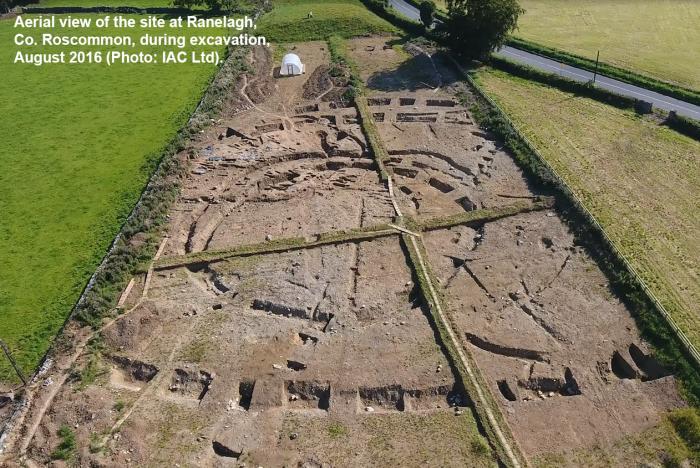Ranelagh Osteoarchaeology Project lecture
Professor Eileen Murphy of Queen’s University Belfast (QUB) will deliver a free public lecture on Friday 31 May 2019 in Roscommon town dealing with the specialist analysis of a medieval cemetery population uncovered in advance of the construction of the N61 Coolteige Road Project. The talk, entitled ‘The Forgotten Graveyard: excavations at Ranelagh, Co. Roscommon, and the Ranelagh Osteoarchaeology Project’, will take place at 8.00 pm in Hannon’s Hotel, Roscommon town, Co. Roscommon, and is hosted by the County Roscommon Historical & Archaeological Society and Transport Infrastructure Ireland (TII).
A large, previously unrecorded, archaeological site was discovered hidden beneath the grass in Ranelagh townland during archaeological investigations carried out before the construction of the N61 Coolteige Road Project. Over 54 weeks of excavation of the site was undertaken by Excavation Director Shane Delaney and his team from Irish Archaeological Consultancy Ltd, on behalf of Roscommon County Council and TII.
They discovered that the site was in use for over 500 years, initially as a large settlement and farm enclosed by a protective bank and ditch. The artefacts discovered were typical of those from the sixth–11th century AD. They include personal items such as combs made of antler, dress accessories and jewellery, and iron knives, but also special artefacts for fine dining. Post-excavation specialist analyses are ongoing.

The most extraordinary discovery was, however, that the settlement had developed into a cemetery with over 1,000 human burials—long since forgotten. The subject of Professor Murphy’s talk is the scientific study of those human skeletal remains, which are being analysed under the ‘Ranelagh Osteoarchaeology Project’ based in QUB. Post-excavation analysis has focused on a detailed osteoarchaeological examination of all human skeletal remains alongside a comprehensive programme of radiocarbon dating that will facilitate a thorough understanding of the development and lifespan of the burial ground.

A targeted programme of ancient DNA (aDNA) analysis is determining the genetic composition of particular individuals and investigating issues of familial relatedness, disease, and the potential presence of non-local people in the cemetery. The aDNA work is being carried out in collaboration with Professor Dan Bradley of Trinity College Dublin. Further collaboration involves stable isotope research undertaken by Dr Julia Beaumont of the University of Bradford. This research is exploring issues related to diet and migration, as well as maternal and infant health.
The involvement of the University sector in the project has the added benefit of enabling smaller spin-off research projects to be developed and a number of students are also undertaking dissertations on aspects of the remains, including aDNA analysis of soil samples, palaeopathology, and funerary practices. Professor Murphy is keen that the people of Roscommon get a chance to learn about this important research: ‘‘We are delighted to have been given the opportunity to study the remains of the people buried at Ranelagh, which are providing a huge amount of information about daily lives, beliefs and community and family relationships in medieval Ireland.”
‘The Forgotten Graveyard: excavations at Ranelagh, Co. Roscommon, and the Ranelagh Osteoarchaeology Project’ takes place at 8.00 pm, Friday 31 May 2019, in Hannon’s Hotel, Roscommon town, and admission is free.